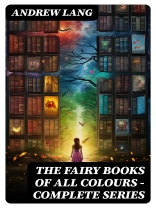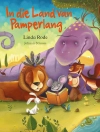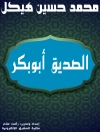In ‘The Fairy Books of All Colours – Complete Series, ‘ Andrew Lang masterfully compiles a rich tapestry of folktales and fairy tales that transcend cultural boundaries. This collection, known for its vibrant illustrations and enchanting narratives, is woven together with Lang’s signature prose style—lyrical yet accessible. Each volume gleans from various traditions, including European, African, and Asian stories, presenting timeless archetypes and moral lessons while highlighting the interconnectedness of human experience. Lang’s work serves as a significant contribution to the genre of children’s literature, contextualizing narratives that not only entertain but also educate readers about the cultural heritage of storytelling. Andrew Lang, a Scottish poet, novelist, and literary critic, was deeply influenced by his early exposure to folklore during his studies at the University of Glasgow and his travels throughout Europe. His scholarly curiosity and passion for myths and legends inspired him to collect and reinterpret these tales, making them accessible to a Victorian audience that was beginning to value children’s literature. Lang’s work reflects an era that saw a resurgence of interest in folklore, illuminated by Lang’s tireless efforts to preserve and celebrate the tales that might otherwise have been forgotten. For readers of all ages, ‘The Fairy Books of All Colours’ offers a delightful journey into the world of fantasy and moral introspection. By engaging with these stories, readers not only partake in the joys of wondrous adventures but also evoke a sense of nostalgia for the inherent values and lessons embedded within them. This comprehensive series is an essential addition to any literary collection, inviting both young and old to revisit the transformative power of storytelling.
A propos de l’auteur
Andrew Lang (1844-1912) was a Scottish literary figure, a prolific author, and a versatile scholar, whose work spanned various genres. He was born in Selkirk, and educated at the University of St. Andrews and Balliol College, Oxford. Lang’s interests were diverse, encompassing folklore, mythology, anthropology, history, and classics, a polymathic scope that enriched his writing and critical perspectives. He is most famously known for his collections of fairy tales, The Fairy Books of All Colours, which have captivated generations of readers with their enchanting narratives sourced from different cultures around the world. Each volume, categorized by a color, such as ‘The Blue Fairy Book’ (1889), ‘The Red Fairy Book’ (1890), up to ‘The Lilac Fairy Book’ (1910), brought together a rich tapestry of stories that melded traditional storytelling with Lang’s literary prowess. Unlike the brothers Grimm or Charles Perrault, Lang did not collect the tales firsthand but rather curated and adapted them, often drawing from the work of other folklorists. His editorial hand often softened the narratives, making them more suitable for children. Lang’s contribution to the fairy tale genre is significant for how he canonized these stories within the English literary milieu, influencing how such narratives are perceived and appreciated. Beyond fairy tales, Lang also authored works on folklore, literary criticism, and classical scholarship, leaving a legacy marked by eclecticism and erudition.












